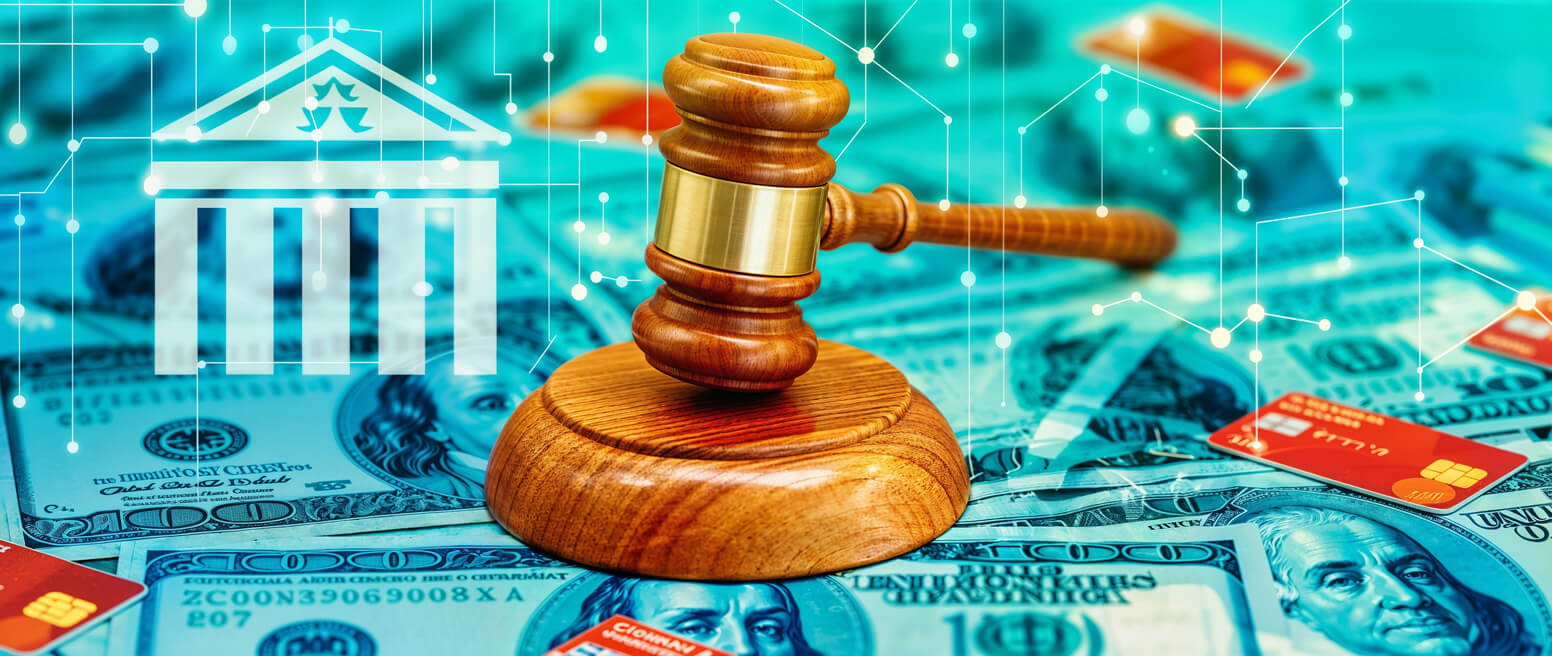What Pieces of Compelling Evidence Will Help You Win Your Next Chargeback? Here’s the Answers.
We always tell merchants to fight every illegitimate chargeback they can. There's a good reason for that; chargebacks are expensive, time-consuming, and can seriously hamper your reputation.
Every chargeback you don’t fight is a guaranteed loss…but how do you actually fight back and win?
The key to successful chargeback representment is compelling evidence. The stronger the evidence, the better the odds that the chargeback will be reversed.
Recommended reading
What is Compelling Evidence?
- Compelling Evidence
In chargeback management, compelling evidence is one of the key components of a winning chargeback dispute. It concerns formal written or electronic documentation intended to verify the legitimacy of a transaction. This evidence must prove the merchant followed established transactional procedures, and be submitted to the bank (along with other documentation) within a specified timeframe.
[noun]/* kəm • pel • iNG • ev • ə • dəns/You’re allowed to push back against chargebacks you feel are unjustified. That said, the process is very specific.
The bank requires you to demonstrate that the chargeback is invalid and the original transaction was legitimate. You must also prove you acted according to best practices and policies. The key is compelling evidence.
What Counts as Compelling Evidence for a Chargeback Response?
Many different types of documentation could be considered compelling evidence in a chargeback dispute. For example:
- Delivery confirmation receipts
- Signed orders
- Screenshots of conversations with the cardholder
- Product photos
- Contracts
- Sales receipts
Any document that helps establish the legitimacy of the original transaction and contradict false claims can be considered compelling chargeback evidence. The specific type of documentation is less important than its function; whatever evidence you share, it must clearly exhibit the validity of the transaction in question. The stronger the evidence, the better the odds that the chargeback will be reversed.
Take the food and beverage industry, for example. If a restaurant operator receives a chargeback, a copy of a printed receipt could be used as dispute evidence.
It would be difficult (if not impossible) to prove a claim beyond any shadow of a doubt. Fortunately, that’s not what the regulations call for, Banks only need evidence that’s strong enough to create a reasonable doubt concerning the consumer’s case.
However, not all evidence works in every chargeback case. When you receive a new chargeback, the first step should be to learn why the chargeback was triggered in the first place.
Provide Focused, Compelling Evidence According to the Reason Code
Chargeback reason codes are an abbreviated way of offering a basic explanation for the chargeback. Each code refers to one of the specific rationales that card networks consider legitimate reasons for a customer dispute. You must tailor your representment case — including the compelling evidence — to the reason code under which the bank filed it.
This can be problematic. First, there’s the fact that reason codes are notoriously ineffective at accurately reflecting the consumer’s real motivation for disputing a transaction.
Complicating matters further, each card network (Visa, Mastercard, etc.) has its own reason code system. Banks also have to interpret card network rules, and may have different criteria for assigning a reason code to a chargeback. The end result is that many disputes end up getting mislabeled.
Along with a brief, concise, and pointed chargeback rebuttal letter, your representment package should only include the facts of the transaction at hand. Delving into personal opinions or anecdotal evidence won’t help you at all. Instead, structure your chargeback response to suit the narrative already provided to you by the bank (i.e. the reason code).
Which Pieces of Evidence Should You Use?
How do you identify the right response? It will take extensive practice, but here are a few sample responses for commonly-used chargeback reason codes:
Some of the incidents outlined above will be genuine cases of cyber shoplifting. In other words, cases in which a cardholder is explicitly trying to get something for free. In these cases, it’s crucial that you put together the necessary evidence and fight back.
Cyber shoplifting represents a comparatively small number of cases, though. Many of these incidents hint at deeper communication issues within your practices. That’s why it’s important to examine chargeback data carefully to try and identify trends.
However, this is not the only challenge that you may have to overcome to fight disputes with compelling evidence.
Challenges of Creating Effective Chargeback Disputes
Challenging chargebacks requires a considerable up-front investment of time, energy, and other resources. Even then, you have no guarantee of success. Several factors contribute to this:
Inconsistent Policies and Practices
The card networks have developed hundreds of pages of lengthy, complex rules for chargeback procedures. They also update their regulations on a frequent basis. It isn’t uncommon for card networks to make major changes to their regulations at least twice a year, with smaller updates coming constantly. It’s challenging to stay current, but it’s absolutely necessary to do so. What constitutes compelling evidence may change overnight; what was acceptable one day may be ineffective the next.
Limited Resources
The representment process is complex and time-consuming, even under ideal conditions. Consulting network policies and locating compelling evidence can tie up a significant amount of resources. With even a few chargebacks a month, you’re forced to invest time and energy in solving past problems. This hampers your ability to focus on revenue-generating areas and slows down future growth.
Low Chance of Success
Historically, merchants who fight their own chargebacks receive a dismally-low return on investment. And, even if you do manage to reverse a case, there is still the risk of (sometimes colloquially called a “second chargeback”). Card networks allow issuers to challenge a representment; this means you could be forced to execute the representment process a second time, but with much steeper fees and a lower chance of success.
You can mitigate many of these challenges by providing the most compelling evidence available for a given reason code. That’s just part of it, though; you must also take a long, hard look at your internal practices.
Ask yourself: are you keeping track of all the pertinent information you could be? How is this information stored? How clear are your policies? All of this and more can affect your ability to gather the compelling evidence you need to win.
Submit the Most Compelling Evidence Possible
Because of the stringent time constraints of disputes, you have to be proactive in gathering compelling evidence. This means developing a coordinated system to collect and archive evidence at the point of the transaction, making it available and easily accessible when needed.
Here are some helpful suggestions to keep in mind concerning capturing compelling evidence:
- If an IP address has been used for previous (undisputed) purchases, track those transactions to help establish a cardholder’s “intent to purchase.” This can also point to the user’s familiarity with your site, services, and policies.
- Tie the customer to the point of the sale. In addition to collecting the cardholder’s IP address, always verify the billing address and security code.
- Use delivery confirmation whenever possible for physical merchandise. For digital goods and services, reference server logs that show the cardholder logged in to download products or had some other interaction with the disputed item.
- Post all shipping, return, and other applicable policies on your site, in clear view. Better yet, have a button or check-box where customers must agree to terms before submitting an order.
- Document and archive any time a customer contacts your customer service department.
Don’t Be Afraid to Ask for Help
You want the best chargeback management results possible. This means the highest win rates, fewer pre-arbitrations, an improved reputation among industry members, and the best revenue recovery. To achieve this, we recommend considering outside help.
Chargebacks911® offers a fully-outsourced solution for comprehensive chargeback management, featuring end-to-end accountability, extensive reporting, and end-to-end, customized risk mitigation plans. Plus, all our services are backed by the industry’s only performance-based ROI guarantee.
Our proprietary systems capture data at the point of each transaction, then automatically use that information in the event of an illegitimate chargeback. You see a higher chargeback win rate while investing less time and fewer resources.
If you’re struggling with compelling evidence — or any other aspect of the chargeback process — contact us today. Find out what Chargebacks911 can do for your business.
FAQs
What is compelling evidence for chargebacks?
“Compelling evidence” is one of the key components of a winning chargeback dispute. It concerns formal written or electronic documentation intended to verify the legitimacy of a transaction. This evidence must be submitted to the bank within a restricted time frame and must prove the merchant followed established transactional procedures.
What kind of chargeback evidence is most compelling?
Many different types of documentation are considered compelling evidence in a chargeback dispute. For example, delivery confirmation information, signed orders, screenshots of conversations with the cardholder, product photos, signed contracts, and sales receipts are all admissible.
How important are reason codes to compelling evidence?
Chargeback reason codes are an abbreviated way of offering a basic explanation for the chargeback. Each code refers to one of the specific rationales that card networks consider legitimate reasons for a customer dispute.
You must tailor your representment case, including the compelling evidence, to the reason code under which the bank filed it. This can be problematic, as reason codes are notoriously ineffective at reflecting the consumer’s real motivation for disputing a transaction.
What are some of the challenges of submitting compelling evidence?
Challenging chargebacks requires a considerable up-front investment of time, energy, and other resources. Plus, there’s no guarantee of success. Several factors contribute to this, including inconsistent policies and practices and access to limited resources.
How can you get ahead of the curve?
You can mitigate many of these challenges by providing the most compelling evidence available for a given reason code. It can also help to take a long, hard look at your internal practices.
Are you keeping track of all the pertinent information you could be? How is this information stored? How clear are your policies? All of this and more can affect your ability to gather the evidence you need to win.














